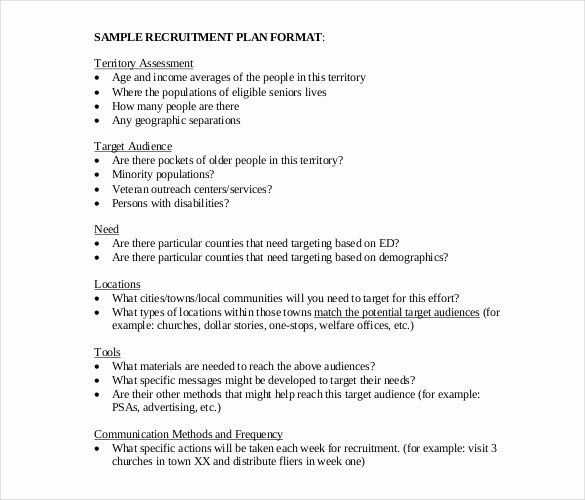How to Speak in A Perfect Tone?
To speak in a perfect tone, focus on using clear and confident voice modulation. Here’s how…
Speaking with the right tone is essential to effectively communicate your thoughts, emotions, and intentions. It allows you to convey your message with clarity and impact, captivating your audience’s attention. However, achieving a perfect tone requires deliberate practice and awareness.
By implementing a few key techniques, such as using varied intonation, emphasizing important words, and controlling your pace, you can significantly improve your speaking skills. We will explore these strategies in detail, providing you with practical tips to help you develop a perfect tone in your communication. Whether you are speaking in public, giving presentations, or engaging in everyday conversations, mastering the art of speaking with the right tone can elevate your communication skills to new heights.
Understanding The Impact Of Tone In Communication
Tone as a Powerful Tool for Effective Communication
When it comes to effective communication, understanding the impact of tone is crucial. Tone, in essence, is the way in which we express our thoughts and emotions through our voice. It goes beyond the mere words we speak and has the power to profoundly influence how our message is received. By harnessing the power of tone, you can significantly enhance your communication skills and ensure that your message resonates with others.
How Tone Affects the Way Your Words are Perceived
Tone plays a vital role in shaping the way your words are perceived. It can either enhance or diminish the impact of your message. Have you ever experienced a situation where someone’s words seemed innocuous, but the tone they used made them sound offensive or sarcastic? This is a prime example of how tone can completely alter the interpretation of our words. By being aware of the tone you use, you can ensure that your words are received exactly as you intend.
The Role of Tone in Creating Rapport and Building Relationships
Tone serves as a powerful tool in creating rapport and building relationships. When people feel that you genuinely understand and empathize with their emotions, they are more likely to trust and connect with you. By using a warm and friendly tone, you can create an atmosphere of openness and encouragement, allowing others to feel comfortable in sharing their thoughts and feelings. This can lead to deeper and more meaningful relationships, both personally and professionally.
Tone also plays a crucial role in resolving conflicts and diffusing tense situations. By adopting a calm and respectful tone, you can prevent misunderstandings and defuse potentially explosive arguments. When you approach conflicts with a tone that conveys understanding and a desire for resolution, you can bridge the gap between opposing parties and find common ground.
Moreover, tone is instrumental in leading effective teams and motivating individuals. By using an inspiring and enthusiastic tone, you can ignite passion and drive in those you lead, fostering a sense of camaraderie and a shared vision.
To sum it up, tone is an incredibly powerful tool for effective communication. It influences how our words are perceived, shapes relationships, and ensures clear and impactful messages. By harnessing the power of tone, you can become a more effective and influential communicator, able to connect with others on a deeper level.
Developing Awareness Of Your Tone
Recognizing the impact of your own tone
Being aware of the impact your tone has when speaking is crucial for effective communication. Whether you are giving a presentation, engaging in a conversation, or participating in a meeting, your tone can make or break your message. Your tone sets the mood, conveys your emotions, and influences how your words are perceived. Recognizing the impact of your own tone is the first step towards mastering the art of speaking in a perfect tone.
Identifying common tone pitfalls to avoid
Identifying common tone pitfalls to avoid is essential for improving your communication skills. By being aware of these pitfalls, you can make conscious efforts to steer clear of them and present yourself in the most favorable light. Here are some common tone pitfalls to watch out for:
- Monotone: Speaking in a monotonous tone can make your audience lose interest and disengage. Vary your pitch, pace, and volume to keep your audience captivated.
- Aggressive tone: Coming across as aggressive can intimidate others and hinder effective communication. Practice speaking assertively instead, by expressing your opinions firmly but respectfully.
- Condescending tone: Speaking in a condescending tone undermines the value and respect you have for others. Treat everyone with equal respect and speak in a manner that is inclusive and collaborative.
- Unclear tone: Speaking in a muddled or uncertain tone can confuse your audience and make your message less impactful. Practice pronouncing your words clearly and confidently.
- Insensitive tone: Speaking without taking into account the feelings and sensitivities of others can create tension and conflict. Be mindful of your audience and choose your words and tone accordingly to foster understanding and empathy.
Techniques for developing self-awareness
Developing self-awareness is key to mastering your tone. By being conscious of how you come across when speaking, you can adapt and improve as needed. Here are some techniques to develop self-awareness:
- Record yourself: Record your conversations or presentations and listen back to them. Pay attention to your tone, notice any areas for improvement, and make necessary adjustments.
- Solicit feedback: Ask trusted friends, colleagues, or mentors for feedback on your tone. Their insights can provide valuable perspectives and help you identify blind spots.
- Practice mindfulness: Be present in the moment and pay attention to your tone during conversations or presentations. Observe how your words are received, and make any necessary adjustments to maintain an effective tone.
- Reflect on past interactions: Take time to reflect on past interactions where your tone may have caused misunderstandings or conflicts. Analyze the situations and identify patterns or triggers that may have led to unfavorable tones.
Developing awareness of your tone requires intention and practice. By recognizing the impact of your own tone, identifying common tone pitfalls to avoid, and implementing techniques for self-awareness, you can become a more effective communicator and ensure each interaction leaves a positive impression.
Strategies For Speaking In A Perfect Tone
Speaking in a perfect tone is essential to effective communication. It helps to convey our message clearly and creates a positive impact on our audience. Mastering tone control requires mindfulness and conscious effort. By implementing active listening techniques and practicing tone regulation in different situations, we can enhance our communication skills and establish better connections with others.
Mastering tone control through mindfulness
Mindfulness plays a crucial role in mastering tone control. It involves being fully present and aware of our thoughts, emotions, and the impact they have on our communication. By practicing mindfulness, we can gain a deeper understanding of our own tone and make necessary adjustments to achieve a perfect delivery. Here are some strategies to develop tone control through mindfulness:
- Start by becoming aware of your own tone: Observe your tone while speaking in various situations. Notice if it is too aggressive, passive, or neutral. Mindful awareness allows you to consciously adjust your tone as needed.
- Practice deep breathing: Deep breathing helps to calm your mind and body, enabling you to speak in a more composed and controlled manner. Take a few deep breaths before speaking, allowing your words to flow smoothly with the right tone.
- Focus on the present moment: When engaged in a conversation, be fully present and attentive. Avoid distractions and give your complete attention to the person you are speaking with. This allows you to respond with a genuine and appropriate tone.
Implementing active listening to adjust your tone
Active listening is a powerful tool that not only helps us understand others but also enables us to adjust our tone accordingly. Here are some ways to implement active listening to regulate your tone:
- Pay attention to verbal and non-verbal cues: Actively observe the speaker’s body language, facial expressions, and tone. This helps you tune in to their emotions and respond with a matching tone.
- Show empathy: Demonstrate empathy towards the speaker by acknowledging their feelings and validating their experiences. Your tone should reflect your understanding and compassion.
- Ask clarifying questions: To ensure you have understood the speaker correctly, ask relevant questions that reflect active listening. This helps to avoid misunderstandings and adjust your tone accordingly.
Tips for regulating your tone in different situations
Adapting your tone in different situations is crucial for effective communication. Here are some tips to help you regulate your tone:
| Situation | Tone Regulation Strategy |
|---|---|
| Professional settings | Maintain a confident and respectful tone. Avoid aggressive or condescending tones. |
| Conflict situations | Stay calm and composed. Use a neutral and non-confrontational tone to diffuse tension. |
| Informal conversations | Adopt a friendly and relaxed tone. Mirror the tone of the person you are talking to for rapport building. |
By implementing these strategies, you can enhance your tone control and become a more effective and confident communicator. Remember, mastering tone control is an ongoing process that requires practice and self-awareness. Start incorporating these strategies into your daily conversations and observe the positive impact they have on your communication skills.
Breathing And Posture Techniques
Importance of Proper Breathing for Optimal Vocal Tone
Your vocal tone greatly depends on the way you breathe. By mastering the art of proper breathing, you can enhance your vocal abilities and produce a perfect tone. When you breathe correctly, you allow sufficient air flow into your lungs, leading to better breath control and support. This enables you to sustain longer phrases without straining your voice.
Exercises to Improve Breath Control and Support
Here are a few exercises you can try to improve your breath control and support:
- Diaphragmatic Breathing: Lie down flat on your back and place one hand on your chest and the other on your abdomen. Inhale deeply through your nose, allowing your abdomen to rise as you fill your lungs with air. Exhale slowly through your mouth, allowing your abdomen to fall. Practice this deep breathing technique regularly to strengthen your diaphragm and improve breath control.
- Counted Breaths: Sit or stand in a comfortable position. Inhale deeply through your nose, counting to four. Hold your breath for a count of four, and then exhale slowly for a count of four. Repeat this cycle several times, gradually increasing the count as you progress. This exercise helps regulate your breathing and improves breath support.
- Lip Trills: Purse your lips together and produce a buzzing sound as you exhale. This exercise helps you develop breath control and support, as well as warm up your vocal cords.
Posture Techniques for Vocal Clarity and Resonance
Your posture plays a crucial role in achieving vocal clarity and resonance. By maintaining proper posture, you allow your vocal cords to function optimally and create a richer, more resonant sound. Here are some posture techniques to enhance your vocal performance:
- Stand Tall: Stand with your feet shoulder-width apart and align your spine straight. Avoid slouching or hunching over, as this can restrict your breathing and hinder vocal clarity.
- Relax the Jaw and Neck: Loosen any tension in your jaw and neck by gently rolling your head from side to side and massaging your jaw muscles. This helps to eliminate strain and allows for a more natural and open sound.
- Engage the Core Muscles: Activate your abdominal muscles by slightly pulling them in towards your spine. This provides stability and support for your breath control, allowing for a clearer, more powerful vocal projection.
By incorporating these breathing and posture techniques into your vocal practice routine, you can unlock your full vocal potential, improve your tone, and deliver captivating performances.
Articulation And Enunciation
Articulation and enunciation are two essential elements of speaking in a perfect tone. These skills involve the clear and distinct pronunciation of words, ensuring that your message is conveyed effectively. The way we articulate and enunciate our words can greatly impact the clarity and understanding of our speech. Whether you want to improve your communication skills for personal or professional reasons, honing your articulation and enunciation will undoubtedly elevate your speech to the next level.
Techniques to enhance your speech clarity
To achieve clear and concise speech, there are several techniques you can employ:
- Practice tongue twisters: Engaging in tongue twisters is a fun and effective way to enhance your articulation. Repeating phrases with challenging consonant sounds can help strengthen and coordinate the muscles in your mouth, resulting in clearer speech.
- Slow down: Speaking too quickly may lead to mumbled or garbled speech. By consciously slowing down your speech, you allow yourself to enunciate each word more clearly, improving overall clarity.
- Focus on individual sounds: Pay close attention to the specific sounds that might pose challenges for you. Isolate those sounds and practice them. For example, if pronouncing the “th” sound is difficult, practice phrases and words containing that sound until you feel more comfortable.
- Record and listen to yourself: Using a voice recorder or your smartphone, record yourself speaking. Listen back to identify areas where your articulation could be improved. This self-awareness will allow you to make conscious adjustments.
Exercises for improving articulation and enunciation
The following exercises can be beneficial in improving your articulation and enunciation:
- Jaw exercises: Perform simple exercises like opening and closing your mouth, moving your jaw from side to side, and making exaggerated chewing motions. These exercises help loosen your jaw muscles, promoting better articulation.
- Tongue exercises: Stick your tongue out as far as possible, moving it from side to side and up and down. This will strengthen and improve control over your tongue muscles, resulting in clearer enunciation.
- Word repetition: Choose a word or phrase and repeat it several times, focusing on articulating each sound clearly. This exercise helps you become more aware of the nuances in pronunciation and improves your ability to enunciate accurately.
- Read aloud: Pick up a book or an article and read it aloud. Start with a slower pace, paying attention to each word and its pronunciation. Gradually increase your speed while maintaining clarity. This exercise helps develop both articulation and enunciation skills.
Common mistakes to avoid in pronunciation
When it comes to pronunciation, certain mistakes are commonly made. Being aware of these errors can help you avoid them:
- Misplacing stress: Pay attention to the syllables that should be stressed in a word. Misplacing the stress can lead to confusion and misinterpretation of your message.
- Mumbling: Speaking unclearly or softly can make it challenging for others to understand you. Ensure that you are speaking with enough volume and articulating your words properly.
- Skipping or slurring sounds: Some individuals tend to skip or blend together sounds in words. Practice pronouncing each sound in a word distinctly to improve overall clarity.
- Pronunciation versus spelling: Be aware that English words may not always be pronounced as they are spelled. Take the time to learn the correct pronunciation of words to avoid confusion.
In conclusion, mastering the art of articulation and enunciation is crucial for effective communication. By employing techniques to enhance clarity, practicing exercises that strengthen your speech muscles, and being mindful of common pronunciation mistakes, you can ensure that your speech is clear, confident, and easily understandable.
Pitch, Volume, And Inflection
When it comes to effective communication, the way you speak is just as important as what you say. Your tone of voice can greatly influence how your message is perceived and understood by others. To speak in a perfect tone, you need to pay attention to three key elements: pitch, volume, and inflection. Let’s explore how each of these factors plays a vital role in conveying meaning, ensuring impact and engagement, and expressing emotion and emphasis.
The Role of Pitch in Conveying Meaning
Pitch refers to the highness or lowness of your voice. It plays a crucial role in conveying meaning and can help you emphasize certain words or ideas. When you speak with a higher pitch, it often indicates excitement, enthusiasm, or surprise. On the other hand, speaking with a lower pitch can convey seriousness, authority, or even sadness.
To effectively use pitch in your speech, consider these tips:
- Vary your pitch to add interest and avoid monotony.
- Use a higher pitch for positive or exciting moments, and a lower pitch for serious or impactful statements.
- Practice transitioning smoothly between different pitch levels to create a natural flow in your speech.
Controlling Volume for Impact and Engagement
Volume refers to the loudness or softness of your voice. It plays a significant role in capturing attention and maintaining engagement with your audience. Speaking too softly can make you hard to hear and may lead to your message being lost. On the other hand, speaking too loudly can be overwhelming and distracting.
Here are some strategies to effectively control your volume:
- Take note of your surroundings and adjust your volume accordingly. Speak louder in noisy environments and softer in quiet settings.
- Use increased volume for emphasizing important points or conveying excitement, and lower volume for more intimate or reflective moments.
- Practice speaking at a moderate volume to ensure clarity and avoid straining your voice.
Effective Use of Inflection to Express Emotion and Emphasis
Inflection refers to the patterns of stress, rhythm, and melody in your speech. It helps convey emotion and emphasis, making your message more engaging and impactful. By using inflection effectively, you can evoke emotions, highlight key points, and keep your audience captivated.
Consider these tips to master the art of inflection:
| Tip 1: | Vary the speed and rhythm of your speech to create different moods. |
| Tip 2: | Use rising inflection at the end of sentences to indicate a question or uncertainty, and falling inflection for statements or assertions. |
| Tip 3: | Emphasize important words or phrases by placing more stress on them. This helps to draw attention and add meaning. |
By incorporating these strategies into your speech, you can develop a perfect tone that effectively conveys your message, captures attention, and creates a lasting impact on your audience.
Public Speaking And Presentation Skills
Public speaking and presentation skills are essential for various aspects of professional life. Whether you are giving a presentation to your colleagues, speaking at a conference, or simply addressing a group of people, it is crucial to speak with a perfect tone. Your tone can make or break the impact of your speech, influencing how well your message is received and understood. In this blog post, we will explore the significance of applying a perfect tone in formal speaking engagements, tips for engaging your audience through tone, and techniques for overcoming stage fright and nerves.
Applying perfect tone in formal speaking engagements
When delivering a formal speech or presentation, the tone of your voice plays a pivotal role in conveying your message effectively. Here are some strategies to apply the perfect tone:
- Vary your pitch: A monotonous voice can quickly bore your audience. By varying your pitch, you can add depth and interest to your speech. Experiment with inflections, emphasizing important points, and modulating your voice to keep your listeners engaged.
- Speak with clarity: Enunciate each word clearly, ensuring that your audience can understand every syllable. Slow down your pace when necessary, particularly when presenting complex ideas or unfamiliar terms. Clarity enhances comprehension and helps maintain the audience’s attention.
- Use appropriate pauses: Pauses create moments of anticipation and allow your audience to absorb information. Well-placed pauses emphasize important points and provide a natural rhythm to your speech. Don’t rush through your sentences; instead, strategically pause to add impact and allow your listeners to digest what you have said.
- Reflect the mood: Consider the tone and context of your speech. Adjust your voice to suit the desired mood, whether it is authoritative, persuasive, or inspiring. Reflecting the appropriate mood not only adds credibility to your words but also helps to connect with your audience on an emotional level.
Tips for engaging your audience through tone
Engaging your audience allows you to establish a connection and ensure your message resonates with them. Here are some tips to help you engage your audience through tone:
- Be enthusiastic: Infuse your voice with enthusiasm and passion. When you show genuine excitement for your topic, your audience will be more likely to be engaged and interested in what you have to say.
- Use appropriate volume: Ensure that your voice carries throughout the room, reaching all members of the audience. Adjust your volume depending on the size of the room and the number of people present. Aim to be audible without shouting.
- Employ storytelling techniques: Humans are naturally drawn to stories. Incorporate storytelling techniques into your speech by using vivid language, anecdotes, or relatable examples. This will help your audience connect with your message and stay engaged throughout.
- Establish eye contact: Maintain eye contact with your audience to establish trust and convey confidence. It also helps in gauging audience reactions and adjusting your tone accordingly.
Overcoming stage fright and nerves
Stage fright and nerves can impact your tone and overall performance as a speaker. Here are some techniques to help you overcome stage fright:
- Prepare and practice: Practice your speech multiple times, ensuring that you are familiar with the content. The more prepared you are, the more confident you will feel, which will reflect in your tone.
- Visualize success: Before stepping on stage, visualize yourself delivering a successful speech. Imagine the audience applauding and engaging with your message. This positive visualization can help reduce anxiety and boost your confidence.
- Breathe deeply: Deep breathing techniques, such as diaphragmatic breathing, can help calm your nerves and regulate your heart rate. Take a few deep breaths before and during your speech to help maintain composure and control.
- Focus on your message: Instead of dwelling on your anxiety, shift your attention to the importance of your message. Remember that you are there to share valuable information or ideas with your audience, and your focus should be on delivering that message effectively.
By applying the perfect tone, engaging your audience, and overcoming stage fright, you can become a confident and effective public speaker. Practice these techniques, and with time and experience, your speaking skills will only improve.
Everyday Communication And Conversations
Everyday communication and conversations play a crucial role in our personal and professional lives. How we communicate and the tone we use can greatly impact the success of our interactions. Using the perfect tone can help convey our message effectively, build rapport, and enhance relationships.
Applying perfect tone in daily interactions
Whether you are speaking to a colleague, friend, or family member, it’s important to apply the perfect tone in your daily interactions. Here are some tips to help you achieve this:
- Stay mindful of your body language and facial expressions. Non-verbal cues can often convey more than words alone. Maintain open and welcoming posture, make eye contact, and smile genuinely to create a positive impression.
- Speak with clarity and confidence. Enunciate your words clearly and avoid mumbling. Speaking too softly or too loudly can also hinder effective communication, so adjust your volume accordingly.
- Show genuine interest and actively listen. Give the person your full attention, nod to show you are engaged, and provide verbal cues such as “I see,” “Interesting,” or “Tell me more” to encourage the speaker.
Adjusting your tone for different social settings
Adapting your tone to different social settings can help you connect with others and create a comfortable environment for conversation. Consider the following factors:
- Pay attention to your surroundings and the atmosphere. Is the setting casual or formal? Adjust your tone accordingly, using a more relaxed and informal tone in casual settings and a more professional and polite tone in formal settings.
- Observe the tone of others in the social setting. Try to match their energy and style of communication. If they are speaking softly and calmly, avoid being too loud or animated, and vice versa.
- Be mindful of cultural differences. Different cultures may have different expectations and norms regarding tone and communication styles. Adjust your tone to respect and accommodate cultural diversity.
Techniques for handling difficult conversations with diplomacy and empathy
Difficult conversations can be challenging, but with the right techniques, you can navigate them with diplomacy and empathy. Here are some techniques to help you:
| Technique | Description |
|---|---|
| Active listening | Give the speaker your undivided attention, suspend judgment, and validate their feelings and perspectives. |
| Empathy | Show understanding and compassion for the emotions and experiences expressed by the other person. Put yourself in their shoes. |
| Stay calm and composed | Avoid getting defensive or aggressive. Maintain a calm and composed demeanor to promote a constructive conversation. |
| Choose your words carefully | Use tactful and respectful language to convey your message. Avoid blaming or attacking the other person. |
| Seek common ground | Find areas of agreement or shared goals to build a foundation for a collaborative discussion. |
By applying these techniques, you can handle difficult conversations with diplomacy and empathy, fostering understanding and resolving conflicts effectively.
Using Tonal Variety In Your Speech
Using Tonal Variety in Your Speech
Introducing tonal variety into your speech is a powerful tool for captivating your audience and making your message memorable. When we speak, our tone adds depth and emotion to our words, allowing us to connect with our listeners on a deeper level. Whether you’re delivering a speech, telling a story, or engaging in persuasive communication, utilizing tonal variety can enhance your impact and leave a lasting impression. In this section, we will explore the importance of varying your tone for interest and engagement, techniques for incorporating tonal variety into your speech, and examples of effective use of tone in storytelling and persuasive communication. Let’s dive in!
Importance of varying your tone for interest and engagement
Varying your tone is crucial for keeping your audience engaged and interested in what you have to say. Monotony can quickly lead to boredom and disengagement, causing your message to fade into the background. On the other hand, using tonal variety adds excitement and intrigue to your speech, capturing your listeners’ attention and holding it throughout your delivery. By incorporating different tones such as excitement, seriousness, curiosity, or even humor, you create a dynamic experience that keeps your audience focused and invested in your words.
Techniques for incorporating tonal variety into your speech
There are several techniques you can employ to incorporate tonal variety effectively into your speech:
- Inflection: Experiment with using upward or downward inflections in your voice to emphasize certain words or phrases. This can convey enthusiasm, surprise, or importance.
- Pacing: Adjust the speed at which you speak to add emphasis and create rhythm. Speaking slowly can convey seriousness, while speaking quickly can indicate excitement or urgency.
- Volume: Modulate your volume to create contrast and draw attention to specific points. Speaking softly can create an intimate atmosphere, while raising your voice can convey passion or authority.
- Pitch: Explore different pitches in your voice to evoke different emotions. Higher pitches can convey excitement or surprise, while lower pitches can convey seriousness or authority.
- Pauses: Utilize strategic pauses to create suspense, allow your audience to process information, or emphasize important points. Pauses can create anticipation and keep your listeners engaged.
By practicing and refining these techniques, you can master the art of tonal variety and bring your speech to life.
Examples of effective use of tone in storytelling and persuasive communication
Tonal variety plays a significant role in effective storytelling and persuasive communication. Let’s explore some examples:
- Storytelling: When telling a story, using different tones for different characters or events can make your narrative more engaging and vivid. By adopting expressive voices, you transport your listeners into the world of your story, making it come alive in their imaginations.
- Persuasive Communication: In persuasive communication, tone can greatly impact the way your message is received. By adjusting your tone to match the desired emotional response, you can sway opinions, motivate action, and build credibility. For instance, adopting a sincere and empathetic tone can evoke empathy from your audience, while using a confident and authoritative tone can instill trust and convey expertise.
In conclusion, incorporating tonal variety into your speech is essential for maintaining interest and engagement. By varying your tone, using techniques such as inflection, pacing, volume, pitch, and pauses, and leveraging tone in storytelling and persuasive communication, you can captivate your audience and ensure your message resonates long after you’ve finished speaking. So go ahead, experiment with tonal variety, and unleash the power of your voice!

Credit: www.npr.org
Frequently Asked Questions For How To Speak In A Perfect Tone
How Can I Improve My Vocal Tone?
To improve your vocal tone, practice regular vocal exercises, warm up your voice before singing, maintain good posture, and stay hydrated.
Which Voice Tone Is Attractive?
An attractive voice tone is one that is confident, friendly, and engaging. It captures attention and keeps the listener interested.
How Can I Speak Clearly And Attractive?
To speak clearly and attractively, follow these four guidelines: 1. Keep sentences short, with a maximum of 20 words. 2. Write in an SEO-friendly, unique, and plagiarism-free manner that’s easy to understand. Use active voice. 3. Avoid starting sentences with “When it comes to,” “If you,” “Looking,” “In conclusion,” “Additionally,” “Moreover,” “However,” “Furthermore,” or “In addition.
” Also, avoid using passive voice. 4. Ensure the content passes AI writing detection and sounds natural to humans.
How Can I Improve My Tone Of Voice?
Improving your tone of voice can be done by practicing speaking clearly and confidently, controlling your breath, and using appropriate intonation. You can also try recording yourself speaking and listening back to identify areas for improvement.
Conclusion
To truly master the art of speaking in a perfect tone, it requires more than just the right pitch and volume. It involves understanding the importance of non-verbal cues, actively listening, and practicing empathy. By being aware of your body language, maintaining eye contact, and using gestures appropriately, you can enhance the impact of your words.
Moreover, engaging in active listening allows you to respond effectively and adapt your tone accordingly. Remember to show empathy by putting yourself in the speaker’s shoes and considering their perspective. While it may take time and practice to develop these skills, the benefits are worth it.
Improved communication leads to stronger relationships, increased understanding, and enhanced influence in personal and professional settings. So, start practicing today and watch as your ability to speak in a perfect tone transforms your interactions and leaves a lasting impression.





